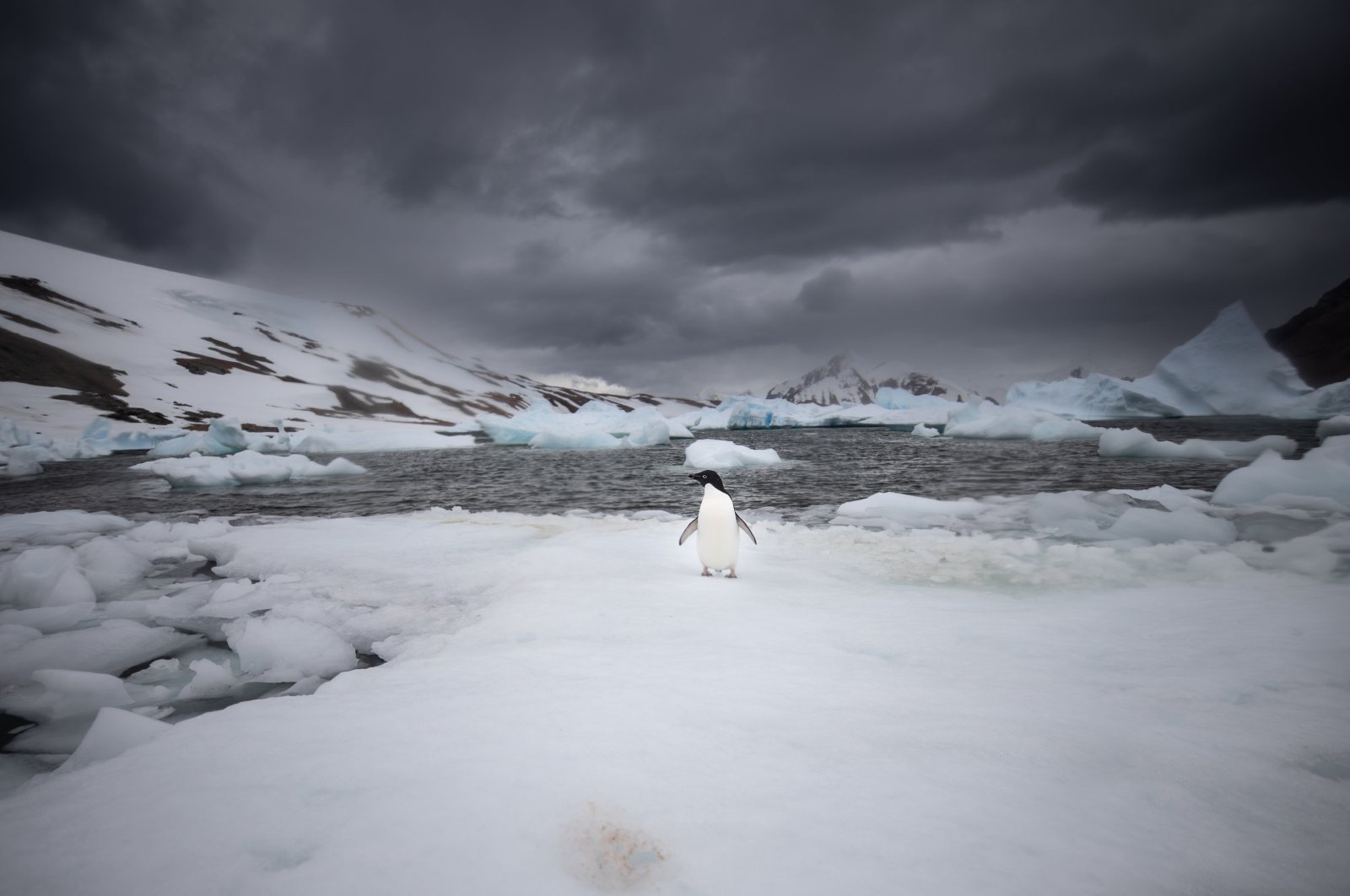
Turkish scientists have become guardians of South Pole creatures, who are significantly affected by the consequences of global climate change, by adhering to regulations in their studies in Antarctica, thus preserving life connected to the White Continent and its oceans.
The researchers, who are participating in the 8th National Antarctic Science Expedition, sent under the auspices of the Turkish Presidency and with the coordination of the TÜBİTAK MAM Polar Research Institute, carried out their work in a manner that would protect the surrounding ecosystem from adverse effects and leave a minimal footprint.
Antarctica, one of the areas most affected by climate change, hosts a vast ecosystem. This ecosystem is home to various creatures, including large marine mammals such as whales inhabiting the oceans surrounding the continent, as well as six species of seals and five species of penguins, which are the symbol of the continent.
Many species of seabirds can also be observed in Antarctica, and it is known that numerous micro and macro organisms inhabit aquatic ecosystems.
The expedition was conducted in accordance with the rules established under the Antarctic Treaty System, ratified by 56 countries in 1961, and the conditions set out in the Antarctic Treaty Environmental Protection Protocol adopted in 2017.
Participants took precautions during fieldwork to protect the environment and wildlife, following the training provided to them before the expedition. Additionally, an environmental officer was appointed to oversee the implementation of these measures during the expedition.
Aybike Gül Karaoğlu, the environmental officer of the 8th National Antarctic Science Expedition, told an Anadolu Agency (AA) correspondent that in Antarctica, which has a sensitive ecosystem, it is necessary to operate with minimal environmental impact. She emphasized that before going to the field, all participants were informed about the need to disinfect their clothing, scientific equipment and all kinds of field equipment.
Highlighting the fragile nature of the flora, including lichens and mosses in Antarctica, Karaoğlu stressed the importance of participants walking without stepping on them.
“It is necessary to walk at least 10 meters away from animals, their breeding areas and nests without disturbing them, as they become aggressive when approached to protect their territory. It is crucial not to disturb the animals. Apart from these, there should be no contact with dead animals. Especially now, with the high pathogenicity of avian influenza, maintaining a safe distance from animals is essential to prevent the spread of the disease to that region and its animals.”
Karaoğlu mentioned that there are six species of seals in Antarctica, but they only encountered four of these species on Horseshoe Island.
“The most commonly seen seal species are Weddell seals, crab-eater seals, fur seals and later leopard seals. Crab-eater seals have a rare tooth structure used to filter krill. In fact, they do not eat crabs; they feed on krill and compete with leopard seals.”
Karaoğlu pointed out that although leopard seals are rarely seen on Horseshoe Island, they encountered one during the expedition.
“Leopard seals feed on most of the nutrients found in the marine ecosystem of Antarctica. They have very sharp canine teeth, and male individuals are weaker but longer compared to females. It was determined that the leopard seal we saw during the expedition was a male.”
Karaoğlu stated that they frequently saw Weddell seals on Horseshoe Island.
“The bellies of Weddell seals are white and they weigh about 400-500 kilograms (881-1102 pounds). They are about 3 meters (almost 10 feet) long. They can hold their breath for about 45 minutes underwater and are excellent swimmers.”
She mentioned that Adelie and Emperor penguins, two of the 17 penguin species worldwide, are frequently encountered.
“Gento and chinstrap species are found in the sub-Antarctic regions.”
She also said that they frequently saw Adelie penguins on Horseshoe Island.
“Adelie penguins are much smaller compared to Emperor penguins. The tallest penguin species is the Emperor, at 122 centimeters, while Adelie penguins are the smallest. Adelie penguins are 46-71 centimeters long and weigh between 3.5-6 kilograms. They feed on krill and fish and are excellent swimmers. They can dive to approximately 175 meters,” she added.
Karaoğlu stated that krill is the primary food source for almost all creatures in Antarctica, including birds, fish, whales and penguins. According to some studies, approximately 250 tons of krill are consumed annually.
